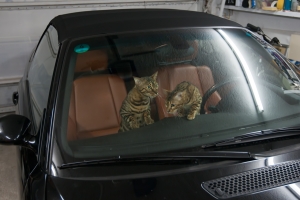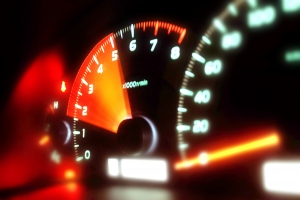As we covered in our previous post about the process of the Maryland state inspection, Maryland residents don’t have to have their vehicles inspected annually. However, when you do need inspection, we are sure you’d like to pass it the first time.
At Ormsby Auto, we inspect hundreds of vehicles every year. Our mechanics know the state regulations pertaining to vehicle safety and they will never fail (or approve) your car without substantial evidence. If the inspection is due, we recommend taking your vehicle to your mechanic and having him do a thorough exam of all vital car components. Particularly have him focus on the following areas, as these are few of the most common reasons why many cars fail Maryland state inspection, from our experience.
Brakes
Unlike your car’s body, auto glass, interior and lights, the condition of your brakes can’t be visually confirmed without partial disassembly. And if you haven’t been diligent with the car maintenance, have driven with your emergency brake on, or purchased a used car with unknown history, it’s a good idea to check the brakes and replace them if necessary before they fail inspection.
Tires
The minimal tire tread depth that will let you pass the inspection is 2/32 of an inch. You’ve probably heard about the test with a penny. Stick a penny in the tread with Lincoln’s figure upside down and facing you. If at least half of his head is covered, you are good to go. You can also repeat this experiment with a quarter, and if a part of Washington’s head is covered, you are even in a better place with 4/32 of an inch tread depth.
Windows
It’s not uncommon among car owners to drive with illegal tint between the inspections and then remove the tint to pass. If you are one of them, you probably already know what to do. However, many drivers don’t realize that most vehicles come with pre-tinted windows. According to the Maryland laws, tinted auto glass must let through at least 35% of light, which means that applying tint that meets this requirement on a pre-tinted window will make the tint too dark to pass the inspection.
Engine
If your “check engine” light is on, don’t even bother sending your car for an inspection, because it will inevitably fail. “Check engine” light may indicate a wide variety of problems from electrical issues to an unfit gas cap and even a failing engine.
Lights
This includes dashboard indicator lights, headlights, turn signals and tail lights. All of them need to meet state and federal regulations, be fully functional and adjusted to the correct brightness. Some after-market Halogen and Xenon-based lights, such as bluish high-intensity discharge (HID) lights might not be legal in some states, especially if they are not utilizing vehicle’s existing light source. Call Ormsby Auto, Maryland Safety Inspection Station #8047-A, and we’ll let you know if your modified headlights will pass the inspection.
Rust and body rot
This mainly concerns older cars with extensive rust issues and body rot. While you can cosmetically mask the rust, you can’t do much about the body rot except for replacing the rotted piece of auto body, which is often rather expensive.
If your local Maryland Safety Inspection station fails your vehicle for the reasons you disagree with, feel free to come to Ormsby Auto for the second opinion. We won’t fail your car just to make you pay for unnecessary repairs; however, there are some dishonest mechanics who will.


